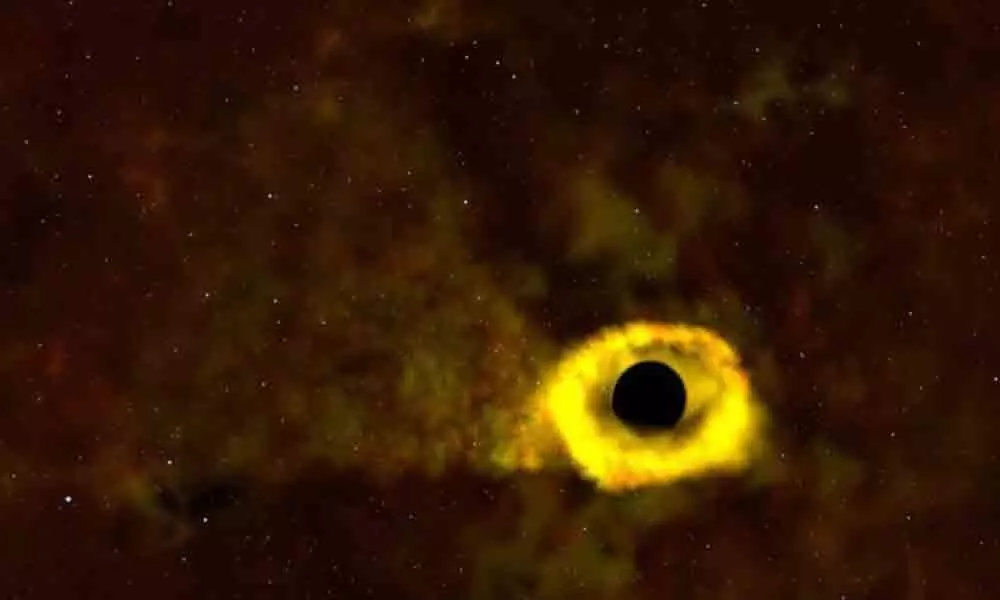Blackhole shredding apart a star observed for the first time

In a first, researchers watched a supermassive black hole - weighing about 6 million times the Sun's mass - shred a star apart in a cosmic cataclysm called a tidal disruption event.
In a first, researchers watched a supermassive black hole - weighing about 6 million times the Sun's mass - shred a star apart in a cosmic cataclysm called a tidal disruption event.
The discovery made using NASA's planet-hunting Transiting Exoplanet Survey Satellite (TESS) - with follow-up observations by NASA's Neil Gehrels Swift Observatory, and other facilities - produced the most detailed look of the star-destroying event. NASA said that tidal disruptions are incredibly rare, occurring once every 10,000 to 100,000 years in a galaxy the size of our own Milky Way, with only 40 such events observed so far.
"TESS data let us see exactly when this destructive event, named ASASSN-19bt, started to get brighter, which we've never been able to do before," said Thomas Holoien, lead author of the study from the Carnegie Observatories in California. "Because we identified the tidal disruption quickly with the ground-based All-Sky Automated Survey for Supernovae (ASAS-SN), we were able to trigger multiwavelength follow-up observations in the first few days. The early data will be incredibly helpful for modeling the physics of these outbursts," Holoien said.
The findings, published in the Astrophysical Journal, noted that the observed supermassive black hole was present at the centre of a galaxy called '2MASX J07001137-6602251' which is located around 375 million light-years away in the constellation Volans. The shredded star, the study noted, may have been similar in size to the Sun. NASA said that the tidal disruption event was discovered by the ASAS-SN - a worldwide network of 20 robotic telescopes headquartered at Ohio State University (OSU) in the US on January 29.
When Holoien received the alert from the project's South Africa instrument, he quickly trained two robotic telescopes in Las Campanas, Chile, to lock in on the location in space where the colossal shredding event happened. He also requested follow-up observations by NASA's Swift space telescope, the European Space Agency's XMM-Newton space telescope, and telescopes in the global Las Cumbres Observatory network in California.
TESS first saw the tidal disruption on January 21 - more than a week before it was bright enough for ASAS-SN to detect it. However, TESS transmitted data to Earth only once every two weeks, and the received signals had to be processed at NASA's Ames Research Center in Silicon Valley, California. Because of this, NASA said that data from TESS on the cosmic event was not available until March 13 making them dependent on coordination with ground-based telescopes like ASAS-SN.
Since the tidal disruption was also observable from TESS's southern continuous viewing zone, the space telescope switched to monitoring the northern sky at the end of July. The location of the cosmic event allowed Holoien and his colleagues to follow the event across several telescope sectors. If the cosmic cataclysm had occurred outside this zone, NASA said that TESS might have missed the beginning of the outburst.














